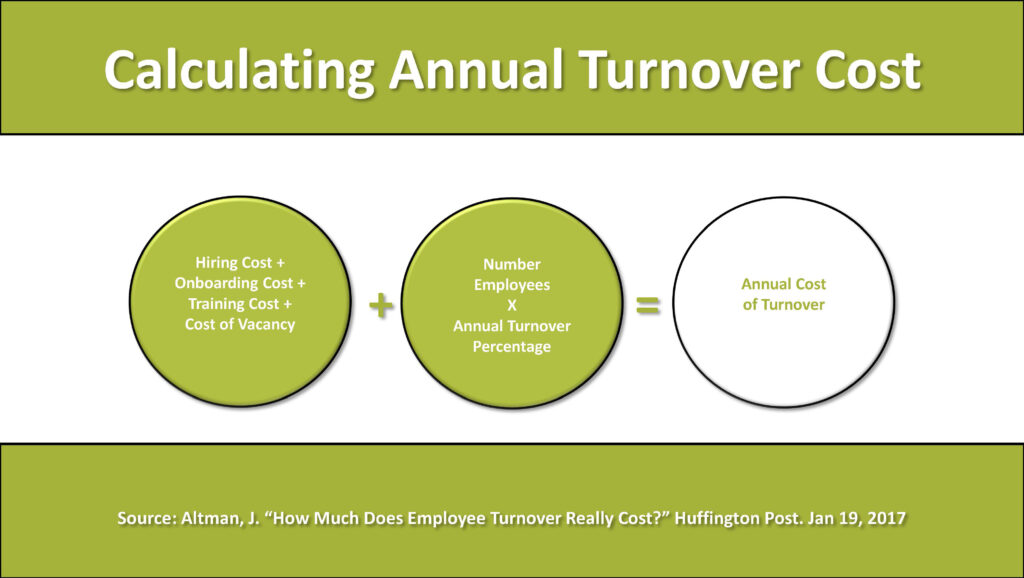In Part 1 of this series, we discussed the statistics underlying the Great Resignation, research on engagement, and some of the actions practice groups can take using the project management approach to stop the exodus and retain talent.
In the continuation of the series, we will look at:
- The cost of turnover;
- Engagement research findings; and
- Measures to reduce attrition.
The Cost of Turnover
Apparently, it doesn’t matter that business is booming and associate salaries are higher than ever. Law firms are currently losing almost 25 percent of their talent on an annual basis.
In industries such as retail, customer service, and hospitality, turnover rates up to 40 percent were common and even accepted way before the pandemic. This was not the case in the legal industry, however. But that’s all changed.
According to the Thomson Reuters Institute 2022 State of the Legal Market report, attrition has dramatically increased: “Associate turnover rate for all firms reached 23.2 percent through November 2021 on a rolling 12-month basis. This is significantly above the 18.7% rate experienced in 2019 (the last “normal” year).”
It’s not enough to simply measure your attrition rate. The key point is to understand the impacts, economic and otherwise, of that attrition. One of the biggest impacts, of course, is the economic and non-economic cost of turnover. What are the factors that make up the cost of losing a valued associate or business professional who is a “revenue enabler” in your firm?
There are both direct costs that affect the bottom line as well as indirect costs. Direct costs include:
- The difference between the compensation, benefits, and overhead for the individual and the dollars they bring to the firm. The last metric suggests that the average associate will break even between the second and third years in the firm. However, a high percentage leave before then.
- The costs of hiring. This includes advertising, recruiters’ fees, onboarding, training, costs for travel for interviews, etc.
Indirect costs of turnover include (among others):
- Impact on client relationships when an assigned lawyer leaves the firm
- Decline in team effectiveness and efficiency when a person has “checked out” even before they actually leave
- Decrease in morale when others see their friends and colleagues leaving
- Potential dip in productivity and work quality as the team adjusts
- Loss of insider information and institutional knowledge
- Time spent in recruiting and onboarding the new professional, and
- Time spent training and developing them.
How Much is it Really?
Josh Bersin is a leading global expert on HR issues who founded Bersin & Associates, a company acquired by Deloitte in 2013. Bersin estimates that the cost of turnover is 1.5 to 2 times the annual salary. With current first-year associate salaries at the largest firms now at $215,000 (at least $235,000 with bonus) and the most senior associates earning up to $400,000 (estimated $530,000 with bonus), the cost of turnover, even using Bersin’s conservative estimate is concerning.
One formula for measuring this was shared by Jack Altman in the Huffington Post, quoting Bersin and others. The difference in law firms is that we also have to take into account the revenues generated each year, at least if we are measuring fee earner turnover.
Looking at primarily the direct costs above, minus the revenues the associate generates, organizations that measured the cost of associate attrition in the early 2000s estimated the amount at over $300,000 per person. In 2000, associate salaries in Big Law were $125,000, with a typical annual bonus of $160,000.
This makes Bersin’s estimate for the cost of turnover of approximately 1.5 to 2 times salary likely pretty accurate. At today’s salaries, this means that firms are potentially looking at turnover costs of roughly $500,000 to over $1 million, depending on the level of the associate.
We could calculate similar numbers using the turnover rates of our highly valued business professionals. Since they are typically not fee earners, the cost of turnover as a percentage of salary is likely to be even higher. And this is primarily looking at the direct costs without much focus on the indirect costs, which can also be quite high.
Engagement Research Findings
Disengagement and burnout are rampant in the legal profession. Burnout feels like exhaustion. Although it isn’t a medical condition, burnout can cause plenty of physical and mental issues. According to the Mayo Clinic, employees who suffer from burnout may find that they must drag themselves to work where they lack the energy to be consistently productive and feel disillusioned about the work they do.
What causes lawyers and legal professionals to burn out? The same things that cause disengagement in many companies. In fact, there is a ton of research coming out of virtually every organization today. If you want to make the business case for trying something different in your practice group, the support you need is right here in just a handful of the many findings.
- Highly engaged teams are 21 percent more profitable. In fact, disengaged workers cost U.S. companies $550 billion a year.
- According to a Gallup poll, engaged employees are 17 percent more productive.
- Employees think engagement is the responsibility of leadership. But “compelling missions, highly trusted relationships and well-designed jobs” can help employees take greater responsibility for engagement.
- Engaged employees are optimistic and better able to deal with workplace stress.
- Engagement can climb even higher when employees are also enabled, according to a Hay Group study. This means putting people in the right roles and providing the support they need to succeed.
- Employees at high-engagement companies report 37 percent better physical health and 39 percent less stress than those at low-engagement locations, according to an Aon Hewitt study.
- Engagement is a critical driver of competitive advantage, according to a white paper co-authored by Pepper & Rogers Group and Allegiance.
Some partners may take pride in being known for being tough to work for – or, frankly, not care. Back in the day, they dropped all weekend plans when a partner gave them an assignment on Friday afternoon that was due Monday morning. They were never “coddled.” That’s just the way things were. Those partners may not be very receptive to the approaches it takes today to keep your professionals engaged in their work at your firm.
So you’ll need to come loaded for bear in order to convince some of these folks to change their mindset – and hopefully their behaviors – toward associates. Show the cost of turnover calculated for your firm, and then look at the annual turnover in your group. That may already be having an impact on the profit margin in your practice, and if not, it likely will soon.
Measures to Reduce Unwanted Attrition
In Part 1, we looked at the four factors that drive employee engagement and the steps that practice groups can take to create an “engagement glue” so that their best talent wants to stay in the firm. These steps approached engagement from the point of view of day-to-day practice management.
In addition, there are actions practice group leaders can take to stem the tide of attrition. They include the following:
Measure what matters.
Better metrics should drive better decisions and behavior by partners in the group. One is the rate of unwanted or involuntary attrition by the practice group. Or, simply look at the numbers hired and the number of departures and use the net.
You do not want to encourage a group to hold onto a professional who is underperforming or who is a bad fit. However, in today’s market, they should hesitate to make rash decisions and label people before they have been given a fair, i.e., supported, chance to succeed.
Provide paths to progression.
The Big 4 do not promote people based on their anniversary date, nor do most other types of businesses. But, law firms have struggled to move away from this lockstep approach, fearing that they would lose talented associates who favored the historic model. Plus, associates, exercising the skepticism that is part of their DNA, had trouble believing that any alternative created by the partners would be to their benefit. Some were suspicious that it was a way to hold more of them back or pay them less.
Engagement research outside of the legal arena suggests that systems that have clear paths for progression, measurable progress, and benchmarks, etc., are more in line with what people want right now. When leaders set clear expectations and pathways to advance, lawyers are more likely to thrive.
Provide work at the highest level.
Most professionals want to develop their skills and use their best talents. Practice groups can facilitate a more equitable allocation of assignments via a centralized workload system. Historically, assignments were doled out based on which partner wanted which associate, the so-called free market system.
The free market system, although it sounds democratic, creates inequities, limits exposure to different partners, overrides associates’ career goals, and ignores a logical progression of development. With a centralized workload system, client needs and partner preferences are factored in. However, there is also a critical emphasis on the developmental needs and desires of the associates. In a future post, I will share more about how to make these systems work.
Make others feel valued.
When employees feel valued, they are likely to go the extra mile. There are four essential ways to show employees how much they are valued:
- Be interested in them. Ask them which projects they enjoy, where they would like to see their practice go, and what aspirations they have for career growth. Take a few moments to say something encouraging.
- Get to know them. Your lawyers and professionals have a life outside of the office. Ask about it and remember what they tell you.
- Invest in them. Ensure they have real mentors with whom they have good chemistry. Be sure they feel connected to colleagues.
- Acknowledge them publicly. Thank them in front of others and build them up even when they aren’t in the room. A heartfelt thank you goes a long way, but it’s even better when you are specific about why you appreciate them.
Engender trust through action.
Trust is something that builds over time. Be decisive and demonstrate that you are a person of integrity and will keep your word. Always maintain a professional and ethical environment. If you are wrong, admit it. When you have built trust, you will be able to have difficult conversations without damaging relationships.
Support healthy behaviors.
Did you know that, during the pandemic, more than one-third of all Americans are exhibiting signs of clinical anxiety and depression? It’s difficult to imagine what this means for the legal profession, where the numbers were already alarmingly high. Anxiety, depression, stress, substance abuse – for some, it’s part and parcel of life as a lawyer. Few wonder why there is such a high level of drug and alcohol abuse in the legal profession, yet some feel that the actions to address the issue haven’t been enough.
There is a lot we can do to ensure that we create a healthy environment. Create a psychologically safe space so that people can speak up, share ideas and be themselves.
This includes modeling healthy behavior, encouraging a balanced lifestyle, demonstrating respect for others, listening attentively, and valuing diversity.
Final Thoughts
Leadership skills matter most when it comes to creating engagement and retaining top talent. Admittedly, there are soft skills, like compassion and empathy, that can be difficult for some leaders to acquire. But there are steps that you can take to help lawyers and legal professionals work smarter and make better use of talent, whether or not it is their natural inclination.
It is incumbent on practice group managers to:
- Understand the factors that underlie attrition;
- Develop the right metrics and systems internally to support the behaviors you want;
- Deploy mentoring and training, as well as tools that support working effectively and efficiently.
The world has changed. Today’s associates have different wants and needs. If you’re going to win the war for talent, you’ll want to take the right steps to help your firm be the law firm of choice.
Stay tuned for more posts on this topic and for the new edition of The Practice Group Leader’s Handbook for Success, a treasured classic by many PGLs who have read it over the years. This book covers some of the topics mentioned above and more. It will be updated later this year, but much of the current book’s content is timeless and applies to every PGL getting started in their role or learning new approaches.
The book is currently on sale. Also, if you are a practice group leader or practice group business professional with ideas you’d like to share for the new edition of the book, let me know at slambreth@lawvision.com. I would love to interview you.
Posted In


